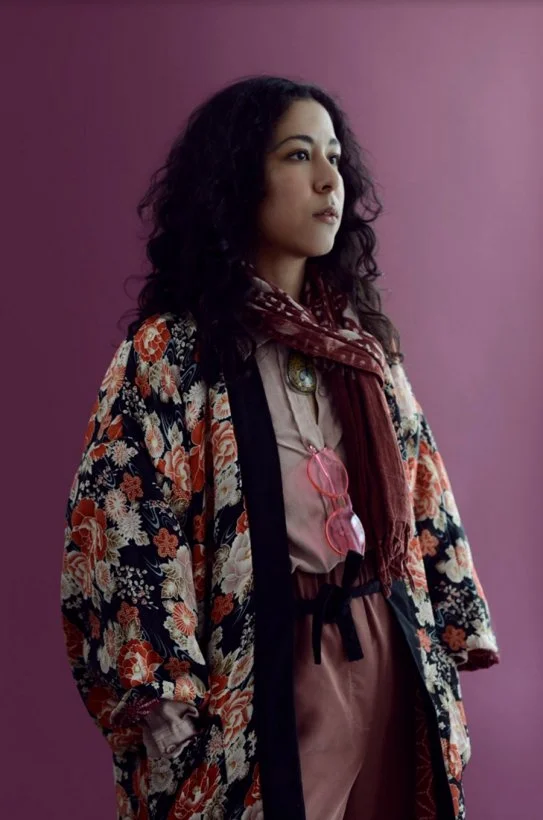In Conversation with Yelaine Rodriguez: Curating Afro-Latinidad Front and Center
Portrait of Rodriguez. Elia Alba, La Joya (Yelaine Rodriguez), 2019.
A frank and blunt conversation with Bronx-based artist and curator Yelaine Rodriguez. Rodriguez, consistently and unapologetically reps for Afro-Latinx visibility in her art and curatorial practices. Rodriguez shares early roots of her art career, her recent brilliant show Afro Syncretic, and remaining creatively fruitful during these unprecedented times.
GG: Can you talk briefly about your journey in the art world as an artist and curator?
YR: I grew up in a household full of artists. My older sister went to The New School and my older brother went to the Fashion Institute of Technology. I knew I wanted to be in a creative field but I had not yet envisioned what that would look like for me. When I went to The New School, I decided to major in Fashion Design to differentiate myself from my older siblings. However, I soon realized that my interest transcended the runway. I was more involved in community-centered ideologies. This fueled my desire to produce art that felt personal.
I was employed at Altos de Chavón la Escuela de Diseño in the Dominican Republic, when a law passed in 2013 that left numerous Dominicans of Haitian descent stateless. I wanted to find a way to bring awareness to this blatantly racist law. I gathered my few resources and formed an artist collective of Dominican and Haitian artists entitled La Lucha: Dominican Republic and Haiti, One Island. This artist-based organization sought to educate, explore, and create spaces in which the Dominican & Haitian communities can study their shared histories. The collective was extremely educational; I learned about community building, cultural equity, and art as activism. That experience influenced and guided my curatorial journey and art practice.
“However, some organizers are opportunists and undermine native Bronx artists. The Bronx is extremely undervalued as a borough and now that gentrification has taken its toll in the city, Harlem, and Brooklyn, developers are looking at The Bronx. We are the last frontier.”
Shango: We are here, because you were there, 2017. Photograph by Melanie Gonzalez.
You recently curated the group exhibit Afro Syncretic at NYU which focuses on Afro-Latinidad, and its many layers. This exhibit is consistent with past exhibits you've organized, as you constantly amplify Afro-Latinx narratives through your lens. Can you talk about this urgency and importance?
As a Black Dominican-American artist and curator, I aim to create platforms that foreground the African roots of the Latinx diaspora. More importantly, I want to dismantle those trends that undermine Black Latinness. The intersectionality of a Black Latinx artist is empowering, yet it is historically associated with adverse stereotypes. The Afro-Latinx diaspora consistently has to defend their seat at the table. This current push for Latinx artists nonetheless underrepresents the Afro-Latinx community.
When I received The Latinx Project curatorial fellowship at NYU, I already knew that I wanted to center the Afro-roots in the Latinx community. Until all of our stories are valued, we would not achieve cultural equity. I want Afro-Latinx artists to be able to share and control their narratives. Additionally, I want institutions to recognize and support these artists' collective experiences.
Opening night of Afro Syncretic , curated by Rodriguez, for The Latinx Project’s second exhibition held at NYU’s KJCC in 2019. Photograph by Antonio Andres Rodriguez.
What kind of everyday and historical references about Black diasporic culture inform your fashion practice?
I predominately implement both Black U.S and Black Caribbean experiences in my fashion practice. I had a very Euro-centric college experience that I had to process as an adult. I find myself looking into the archives at the Schomburg Center for Research in Black Culture in Harlem, trying to uncover these gems for myself. I love old classic Black films with actresses like Eartha Kitt and Dorothy Dandridge and I combine those silhouettes with symbols found in the Afro-Syncretic religion of Santeria and Vodou. I look to create the mask & crowns that accompany each outfit and draw from Pre-Columbian sculptures as well, specifically the Zemis sculptures from the Caribbean. But I work very organically. I do not sketch much. I like to see how the materials speak to me. I enter in dialogue and ask them what they want to be.
You're a Bronx-born artist who has exhibited in Bronx spaces like Wave Hill and you’re a current Bronx Museum AIM Program recipient. Talk to me about sharing your art in your borough.
I am a proud Bronxite. I had the honor to exhibit in my borough, to be the recipient of the Van Leir Fellowship at Wave Hill (2018), and recently the Bronx Museum AIM Program (2020). However, some organizers are opportunists and undermine native Bronx artists. The Bronx is extremely undervalued as a borough and now that gentrification has taken its toll in the city, Harlem, and Brooklyn, developers are looking at The Bronx. We are the last frontier. We are continuously threatened by these types of developers but also by our borough president Ruben Diaz Jr. who is pro-gentrification. The Bronx is so dear to my heart that I regularly use it as a backdrop in my photography. Viewers are often surprised that my photographs take place in The Bronx. Historically people are conditioned to think the worst of my home.
Ezili Dantor, Freedom & The African Diaspora: We are here, because you were there, 2018 Installation. Photograph by Stefan Hagen.
What's next for 2020, but real talk, feel free to be honest about these uncertain times we're in and how you're coping.
No one has experienced something like this before, we are trying to process and cope with how we can. My curatorial and artistic practice center around the community, making it extremely difficult to self-isolate. I was pretty distraught in the beginning when a few upcoming projects I had were canceled or pushed back, but I understand it’s for the greater good of humanity. These times have made me appreciate those moments I shared with my community even more. It is making me re-evaluate how I want to spend my time in the near future when this is finally over.
I’m already thinking about ways I can bring people together once it’s safe to reunite. I’m writing exhibition proposals centered around community and self-healing. I continue to work on my artistic practice so that I’m prepared to shoot when this quarantine is done. Classes are still going on, just remotely, although it’s not my preferred way of learning. I also FaceTime a lot with my loved ones, making sure that we’re checking in with each other and encouraging one another to stay mentally active until we can get to hug each other again.
“The Afro-Latinx diaspora consistently has to defend their seat at the table. This current push for Latinx artists nonetheless underrepresents the Afro-Latinx community.”
Portrait of Rodriguez. Photograph by Wouter Pocornie.









